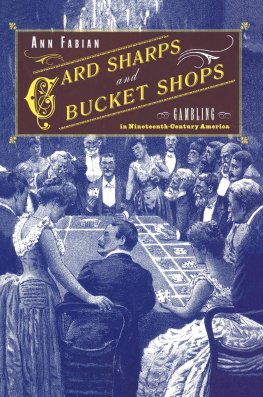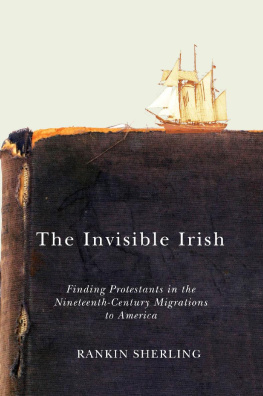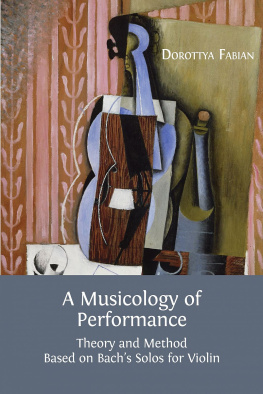Ann Fabian - The Unvarnished Truth: Personal Narratives in Nineteenth-Century America
Here you can read online Ann Fabian - The Unvarnished Truth: Personal Narratives in Nineteenth-Century America full text of the book (entire story) in english for free. Download pdf and epub, get meaning, cover and reviews about this ebook. publisher: University of California Press, genre: Art. Description of the work, (preface) as well as reviews are available. Best literature library LitArk.com created for fans of good reading and offers a wide selection of genres:
Romance novel
Science fiction
Adventure
Detective
Science
History
Home and family
Prose
Art
Politics
Computer
Non-fiction
Religion
Business
Children
Humor
Choose a favorite category and find really read worthwhile books. Enjoy immersion in the world of imagination, feel the emotions of the characters or learn something new for yourself, make an fascinating discovery.
- Book:The Unvarnished Truth: Personal Narratives in Nineteenth-Century America
- Author:
- Publisher:University of California Press
- Genre:
- Rating:3 / 5
- Favourites:Add to favourites
- Your mark:
- 60
- 1
- 2
- 3
- 4
- 5
The Unvarnished Truth: Personal Narratives in Nineteenth-Century America: summary, description and annotation
We offer to read an annotation, description, summary or preface (depends on what the author of the book "The Unvarnished Truth: Personal Narratives in Nineteenth-Century America" wrote himself). If you haven't found the necessary information about the book — write in the comments, we will try to find it.
Ann Fabian: author's other books
Who wrote The Unvarnished Truth: Personal Narratives in Nineteenth-Century America? Find out the surname, the name of the author of the book and a list of all author's works by series.
The Unvarnished Truth: Personal Narratives in Nineteenth-Century America — read online for free the complete book (whole text) full work
Below is the text of the book, divided by pages. System saving the place of the last page read, allows you to conveniently read the book "The Unvarnished Truth: Personal Narratives in Nineteenth-Century America" online for free, without having to search again every time where you left off. Put a bookmark, and you can go to the page where you finished reading at any time.
Font size:
Interval:
Bookmark:

The Unvarnished Truth
Personal Narratives
in Nineteenth-Century America
Ann Fabian
UNIVERSITY OF CALIFORNIA PRESS
Berkeley Los Angeles London
University of California Press
Berkeley and Los Angeles, California
University of California Press, Ltd.
London, England
First paperback printing 2001
2000 by the Regents of the University of California
Library of Congress Cataloging-in-Publication Data
Fabian, Ann.
The unvarnished truth: personal narratives in nineteenth-century America / Ann Fabian.
p. cm.
Includes bibliographical references and index.
ISBN 978-0-520-23201-3 (pbk.: alk. paper).
1. United StatesHistory19th centuryBiography. 2. Autobiography. 3. PoorUnited StatesBiography. I. Title.
E337.5.F33 2000
920.073dc21
99-12652
CIP
Manufactured in the United States of America
10 09 08
10 9 8 7 6 5 4 3 2
The paper used in this publication is both acid-free and totally chlorine-free (TCF). It meets the minimum requirements of ANSI/NISO Z39.48-1992 (R 1997) (Permanence of Paper).
For my mother,
Virginia Fabian
In democracies it is by no means the case that all the men who cultivate literature have received a literary education; and most of those who have some tinge of belles-lettres are either engaged in politics, or in a profession which allows them to taste occasionally and by stealth the pleasures of the mind. They prefer books which may be easily procured, quickly read, and which require no learned researches to be understood.
Alexis de Tocqueville, Literary Characteristics
of Democratic Ages, Democracy in America (1840)
In democratic communities each citizen is habitually engaged in the contemplation of a very puny object, namely himself. If he ever raises his looks higher, he then perceives nothing but the immense form of society at large, or the still more imposing aspect of mankind. His ideas are all either extremely minute and clear, or extremely vague: what lies between is an open void.
Alexis de Tocqueville, Of the Inflated Style of American
Writers and Orators, Democracy in America (1840)
ILLUSTRATIONS
PREFACE
Although most of the stories I investigate here were written in the nineteenth century, it was one of the more tawdry episodes of the late twentieth century that led me, I confess, to the idea for this book. That story begins with a Long Island garage man named Joey Buttafuoco, who took up with one of his customers, a teenager named Amy Fisher. Some months into their affair, Fisher went to Buttafiioco's house and shot an unsuspecting Mrs. Buttafuoco in the head. The three of themButtafuoco, the wounded wife, and the teenage loverparaded through the tabloid press during the spring of 1992. Tabloid fame was enough to make them celebrities, and celebrity status was enough to make each of their stories worth money. When Amy Fisher's lawyer surveyed the crowd of reporters and agents gathered around his client, he realized that her version of the story could be sold at a premium, and he proposed peddling it to raise cash for her bail and his fees. After all, he told a reporter for the New York Times, she's just a teenager. Her story is her only asset.
Or the only asset she could easily hawk from a jail cell. The lawyer's comment struck me as peculiar when I first read it, but of course, Fisher was not the first storyteller of modest literary talent to seek profit by offering the curious public a true eyewitness account, and, as we have learned in the wake of presidential impeachment, she will not be the last.
Fisher and Buttafuoco may reveal the tacky side of personal stories sold for profit, but at times in the past such stories have had a more serious intent. The very possibility of telling tales based on experience has been a refuge for the weak and ruined, a means for those deprived of power, authority, and education to come before the great public. I wondered why people went public with tales of suffering and misadventure, and I turned to the stories told and sold by beggars, convicts, slaves, and soldiers to try to discover how poor people went about getting their stories into print. What did it mean to base a tale on experience? What rules governed the representation of experience? What happened when a storyteller was caught inventing the details of experiences described as true?
The writers whose stories appear in this book frequendy announced on the page that they appeared in print only at the urgent solicitation of friends. Perhaps they intended the phrase to assure readers that someone, at least, thought they had a good story to tell. Or maybe friends were just plain tired of hearing the same stories over and over again and figured that getting them into print would get bothersome talkers on to something else. Although I have had no urgent solicitations from my friends, I know I have tried their patience. I also know that without their solicitude I would never have finished this book. For their many kindnesses, I am deeply grateful.
For suggestions and criticisms, I thank Jean-Christophe Agnew, Joyce Appleby, Matt Backes, Dan Belgrad, Betsy Blackmar, David Blight, Kathryn Burns, Richard Bushman, Christopher Capozzola, Scott Casper, Kathy Compagnon, Cathy Corman, Michael Denning, Francis Fursten- berg, Jackie Goldsby, Bob Gross, Lisbeth Haas, Karen Halttunen, Tom Head, David Jaffee, Regina Kunzel, Jill Lepore, Rich Lowry, Louis Masur, Tim McCarthy, Margaret McFadden, Meredith McGill, Susan McKinnon, Jeremy Mumford, Teresa Murphy, J. C. Mutchler, Franny Nudel- man, Grey Osterud, Maureen Pearce, Jeffrey Pines, William Reese, Steve Rice, Joan Shelley Rubin, Laura Saltz, Scott Sandage, Marni Sandweiss, Fran Schwartz, Carol Sheriff, Catherine Stock, David Stowe, Alan Tracht- enberg, Glenn Wallach, Lynn Wardley, Shane White, Christopher P. Wilson, and especially Jeanie Attie, who read the whole manuscript for me, and Elizabeth Kaspar-Aldrich, whose ideas appear on nearly every page. I am grateful as well for contributions from students in my seminars at Yale, Columbia, and the American Antiquarian Society and for comments from audiences at the Center for Literary and Cultural Studies at Harvard, the College of William and Mary, the Graduate Center of the City University of New York, the University of California at Santa Cruz, the Bowery Seminar, the Columbia University Seminar on Early American History, the Program in the History of the Book in American Culture at the American Antiquarian Society, and Doshisha University in Kyoto, Japan. Early in my research I had the good fortune to receive support from two institutions whose reputations for generosity to scholars are well deserved: the Shelby Cullom Davis Center for the Study of History at Princeton University, and the American Antiquarian Society in Worcester, Massachusetts. I am happy to think of this book as one of many made of materials found in Worcester, and I am pleased at last to be able to thank Joanne Chaison, John Hench, Caroline Sloat, and everyone at the American Antiquarian Society who had a hand in it. At the University of California Press, Monica McCormick took an interest in this project when it must have seemed pretty peculiar. I am glad that she did. I am grateful as well to Carolyn Hill, whose masterful copyediting improved the manuscript, and to Mary Severance and Marilyn Schwartz who shepherded it through production.
Thanks, too, to my family. Andrew read drafts of the first paragraph of each chapter, warning me about those that contained more than one muddled idea. Isabelle did absolutely nothing, she says, but she grew faster than this book, and that was good enough for me. Chris saw to it that we had music and food. And often that too was enough.
Font size:
Interval:
Bookmark:
Similar books «The Unvarnished Truth: Personal Narratives in Nineteenth-Century America»
Look at similar books to The Unvarnished Truth: Personal Narratives in Nineteenth-Century America. We have selected literature similar in name and meaning in the hope of providing readers with more options to find new, interesting, not yet read works.
Discussion, reviews of the book The Unvarnished Truth: Personal Narratives in Nineteenth-Century America and just readers' own opinions. Leave your comments, write what you think about the work, its meaning or the main characters. Specify what exactly you liked and what you didn't like, and why you think so.







